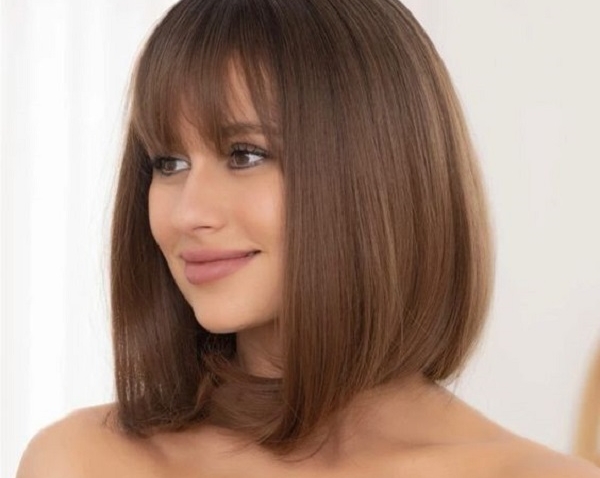
Understanding Why Jewish Women Wear Wigs Post-Marriage
Historical and Religious Origins
The history of why Jewish women wear wigs post-marriage is rooted in tradition and religion. Various sources, ranging from the Bible to the Talmud, provide insights into this practice. Let’s delve into the key aspects that have shaped this custom over time.
Biblical References to Hair Covering
Biblical texts serve as the earliest points of reference for hair covering. From verses in the Book of Numbers to poetic lines in the Song of Songs, hair is often mentioned. These references suggest a connection between a woman’s hair and her dignity and modesty. The tradition finds its origins in the sacred writings that have been passed down through generations.
Talmudic Discussions on Modesty
The Talmud, a central text in Judaism, expands on biblical laws. It discusses the importance of modesty and community values. The rabbis’ debates in the Talmud include whether a woman’s hair needs covering and under what circumstances. These discussions reflect the ongoing effort to interpret religious commands.
Influence of the Sotah Ritual
The Sotah ritual described in the Bible has had a lasting impact on this custom. It involves uncovering a woman’s hair as part of a test for faithfulness. This ancient practice has influenced the later Jewish understanding of hair covering as a symbol of modesty and marital commitment.
The Role of Community and Culture
Within the Jewish faith, the customs and practices surrounding women’s hair covering post-marriage are diverse. This diversity is a testament to the role that community and culture play in interpreting religious norms.
Variations in Jewish Communities
Different Jewish communities have developed unique ways of observing the tradition of hair covering. Some prefer the sheitel, or wig, while others choose scarves or hats. The variations reflect the communities’ interpretations of modesty, as well as their responses to local customs and climates.
Changes in Practice through the Ages
Over time, the practice of hair covering has evolved. In the past, some communities expected women to cover all their hair. Today, the degree of covering varies widely. Many factors, such as social integration and personal preference, have influenced these changes.
Influence of Western Trends
Western cultural trends have also shaped hair covering practices among Jewish women. As Western attire becomes more common in diverse societies, traditional garments may blend with contemporary styles. This fusion can create new interpretations of modesty and hair covering within the Jewish tradition.

Practical and Spiritual Implications
The practice of Jewish women wearing wigs post-marriage carries both practical and spiritual implications. It symbolizes marital status and reflects an interpretation of modesty and beauty.
Symbolism of Marital Status
Within Jewish culture, a covered head often indicates a woman’s married status. This visible symbol acts like a wedding ring, but for the hair. Adopting a wig or other head covering post-marriage publicly communicates a woman’s commitment to her spouse.
Interpretation of Modesty and Beauty
Wigs maintain a balance between modesty and aesthetic appeal. While obeying the modesty tenets of Judaism, women can still express personal style. The tradition upholds the value of modesty while allowing a woman to look her best.
Understanding the Mystical Importance
In Kabbalistic teachings, hair covering goes beyond social norms. It is seen as a spiritual act, fostering divine connection. The practice holds deep mystical significance, as covering the hair is thought to channel spiritual energies in harmonious ways.
Contemporary Practices and Perspectives
Contemporary Jewish women face varied attitudes and practices regarding hair covering post-marriage. These range from strict observance to more individualized expressions of faith and feminism. Let’s explore the current views and practices around this tradition.
The Debate Among Modern Jewish Authorities
Today’s debate among Jewish leaders centers on how women should approach traditional hair covering. Different authorities offer contrasting opinions on whether hair covering is a strict religious mandate or a cultural guideline subject to change.

The Impact of Women’s Education on Practices
Education plays a key role in shaping practices around hair covering. With more women studying Jewish texts, they make informed decisions on observance. Some choose stricter adherence, while others feel empowered to interpret the custom in their own way.
Hair Covering as Personal Choice vs. Communal Norm
Hair covering is seen by some as a personal act of piety, not just a rule to follow. Women assess their own comfort with the practice against community expectations. This often leads to diverse and individual expressions of the tradition within various Jewish communities.
Hair Covering in Different Streams of Judaism
The tradition of hair covering varies among the different streams of Judaism, each adapting the practice to align with their particular doctrinal emphasis and cultural milieu.
Orthodox Jewish Communities
In Orthodox Jewish communities, hair covering remains a prevalent practice among married women. It is common to see women wearing wigs, known as sheitels, which are often favored for their convenience and the natural appearance they can provide. Some Orthodox women may opt for hats, scarves, or other head coverings in lieu of or in addition to wigs, as dictated by community norms and personal levels of observance.
Conservative and Reform Views
Conservative and Reform streams offer a more individualized approach to the tradition of hair covering. These movements typically do not require women to cover their hair on a daily basis but may encourage or expect head coverings during synagogue services and religious functions. For participants in these communities, the act of covering the head is seen more as a mark of respect and a connection to Jewish heritage than an obligation rooted in marital status or modesty.
Secular and Cultural Jewish Perspectives
Secular and culturally affiliated Jews often approach hair covering as an optional cultural practice rather than a religious mandate. In these circles, if hair covering is observed, it is frequently in a less formal or ritualized way, such as during special occasions or cultural events. Emphasis is placed on personal choice and the expression of cultural identity, rather than adherence to a religious standard.
The Societal Misconceptions and Clarifications
Society often harbors misunderstandings about why Jewish women wear wigs after marriage. Let’s clear these up.
Common Misunderstandings Addressed
Many believe wearing a wig defeats the purpose of modesty. This isn’t true. Wigs help balance tradition with modern living. Some think all Jewish women must wear wigs; however, practices vary by community and personal choice. Another misconception is that wigs are forced upon women. In reality, many embrace them as part of their faith.
Exploring the Reasons Behind Hair Covering
Hair covering stems from religious texts, symbolizing a woman’s marital status and adherence to modesty. It’s not just about hiding beauty but about expressing commitment and values. Education has empowered women to make informed decisions regarding this practice, reflecting depth beyond mere tradition.
Responding to Critiques and Judgment
Criticism of hair covering often comes from outside the Jewish community. Armed with knowledge, Jewish women can address critiques confidently. They can highlight that the choice to cover hair, whether with wigs or other methods, respects both cultural heritage and individual expression. By understanding and respecting this choice, outsiders can foster a more inclusive perspective on religious practices.
The Diversity of Hair Covering Methods
In Jewish culture, the methods and styles of hair covering vary. Women have many options, from sheitels to scarves. Each choice carries its own significance and fits personal and community preferences. The diversity reflects the rich tapestry of Jewish life and observance.

From Sheitels to Scarves: A Range of Options
Options for hair covering range from full wigs to simple headbands. Sheitels, hats, berets, and various scarves offer choices for different settings and levels of comfort. Women select what reflects their style, community norms, and the demands of their daily lives.
The Acceptance of Wigs in Hasidic and Ultra-Orthodox Communities
In Hasidic and ultra-Orthodox communities, wigs are widely accepted. Known as sheitels, these wigs blend religious observance with the desire for a natural look. They allow women to adhere to modesty rules while engaging with the world around them.
The Significance of Additional Head Coverings
Beyond wigs, some women add extra layers like hats or scarves for modesty or style. In some cases, it signals a higher level of religious commitment. These coverings can also be a statement of identity, marking the wearer’s belonging to a specific community.












Leave a Reply